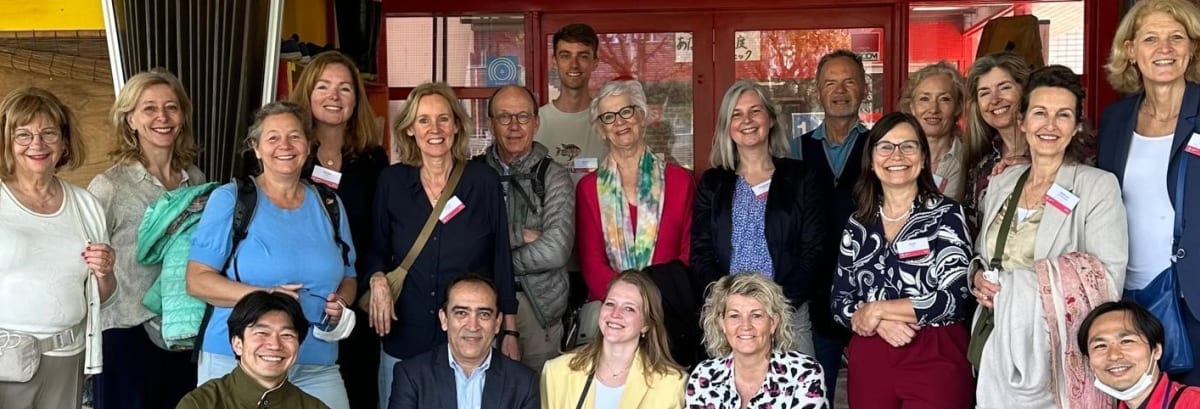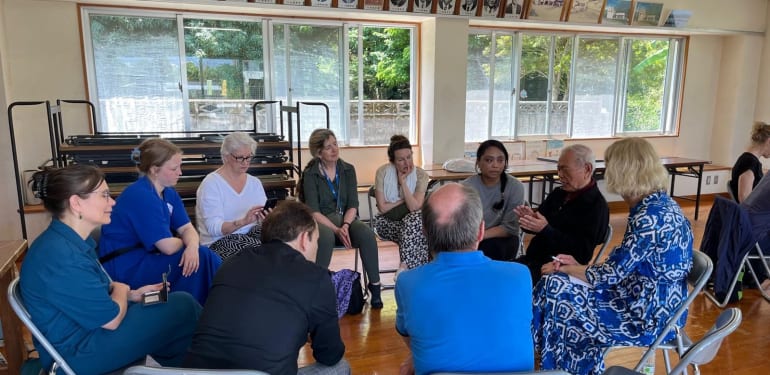Shaping the future of care together: lessons from Japan’s aging society
Published on: 21-05-2025
A team of experts from Vilans went on a study trip to understand how Japan is responding to demographic change and its challenges, an urgent theme as the Netherlands prepares for a similar future.
With over 27% of its population aged 65 and older – expected to rise to 40% by 2050 – Japan faces one of the most rapid demographic shifts in the world. As the population shrinks and ages, the country is forced to rethink how it approaches aging, care, and community. In contrast, the Netherlands currently has around 20% of its population over 65, with projections ranging between 21-28% by mid-century.
What can we learn from a society already living that future? A Dutch delegation travelled across Japan to find out, visiting hospitals, community centres, nursing homes, and innovative care initiatives in Tokyo, Karuizawa and Okinawa, one of the world’s ‘Blue Zones’, where people routinely live well beyond 100 in good health and spirits.
Active aging, everyday joy
The journey started with a visit to Lake of Dreams, a community centre designed to keep older adults physically, mentally, and socially engaged. Every corner of the building offered small challenges to stimulate movement, with the motto: ‘Use it or lose it’. Participants could even earn rewards for staying active, infusing play, dignity, and motivation into daily care.
Simple lives, deep meaning
On the island of Okinawa, often referred to as the ‘Land of the Immortals’, conversations with older residents revealed a humble but powerful view on life. When asked about the secret to aging well, they spoke of simple living: enjoying good food, staying active, and being content with small things.
These day-to-day rhythms form their answer to ikigai, the Japanese notion of purpose. While Western cultures might distil this into diagrams and models, here, it is simply lived.
Jeroen Schumacher, expert
A new vision of care
In Okinawa, the team visited a nursing home where the average age of residents is 93. Rather than a place of decline, it was vibrant and colourful, filled with warmth, kindness, and joy. Staff focused on maintaining autonomy and meaningful routines, showing that even in very old age, life can be rich with dignity and connection.
In Karuizawa, the group visited Hotch no Lodge, a health centre built around the principles of Positive Health.
Combining elements of district nursing and artistic interventions, it offers a serene, community-rooted approach to care. Pianos placed in the forest serve as symbols of how art and environment can be integrated into wellbeing strategies.
Ruth Pel, expert
In all these places, aging is not merely a phase to endure, but a life stage to enrich. Japan’s example shows that ‘caring together’ means more than providing services. It means shaping environments, routines, and relationships that support living well, right to the very end.
Shared challenges, shared opportunities
Hospital visits highlighted a striking contrast: while Japanese institutions often carry strong formal hierarchies, there is a strong commitment to simplicity and empowering patients. Despite system differences, both Japan and the Netherlands face similar challenges, rising care demands, workforce shortages, and the need for sustainable models of health and aging.
What became clear throughout the journey is that Positive Health – an approach that sees health as the ability to adapt and self-manage – is not only relevant in both contexts, but essential. There is a shared opportunity to learn, exchange, and co-develop future-proof solutions.
Annemarie Koopman, expert
Contact
If you have any questions about this article, please contact Ruth Pel, expert at Vilans.







